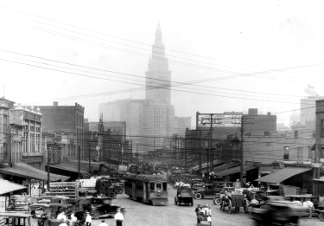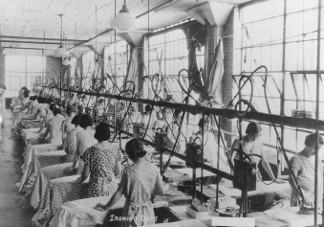CHESNUTT, CHARLES WADDELL (20 June 1858-15 Nov. 1932), a novelist, short-story writer, and lawyer, was the first black writer to deal with race from the Negro's point of view. Born in Cleveland to Andrew J. and Maria Chesnutt, the family moved to Fayetteville, N.C. where Chesnutt grew up. He graduated from Howard School at 16 and augmented his education with study in German, French, and Greek. He taught himself stenography to make a living. Chesnutt became a teacher in black schools in North Carolina, and at 19 was assistant principal of the New Fayetteville Normal School, and later its principal. He kept a journal, from which he would draw for his writing. Chesnutt came to Cleveland in 1883. He studied law and was a stenographer for Judge SAMUEL WILLIAMSON†. He was admitted to the Ohio bar in 1887 and served as a court reporter to support his family and writing.
Chesnutt depicted AFRICAN AMERICANS as human beings, new in American literature where blacks had been portrayed as stereotypes or subtypes. He attempted to bridge the race gap and raise the issue of civil rights and equal opportunity for blacks. In 1887, the Atlantic Monthly published its first Chesnutt story, "The Goophered Grapevine." In 1899, selected stories were published in The Conjure Woman. Another volume of short stories and several novels followed, the most popular being The House behind the Cedars (1900), about intermarriage. Later, Chesnutt's popularity waned as white readers grew tired of his themes. He continued to write and lecture, and was active in the Chamber of Commerce.
In 1878, Chesnutt married Susan Perry; they had 4 children: Ethel, Helen, Edwin, and Dorothy. Chesnutt died in Cleveland and was buried in LAKE VIEW CEMETERY.
Last Modified: 11 Jul 1997 01:16:31 PMCharles W. Chesnutt Papers, WRHS.
- Related Article(s)









